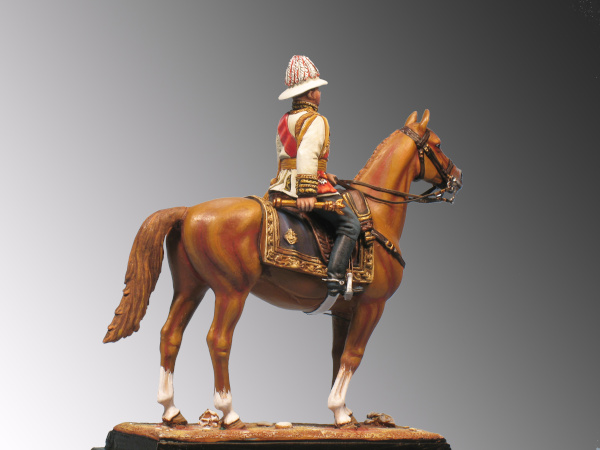You must be logged in to post a review.
€68.00
Figure to assemble and paint
Ref.: 14 – RyE
Weight: 170 grs.
Material: White Metal
Number of Pieces: 17
Historical Review:
KING RAMA VI OF SIAM (1881 – 1925) – REF.: 14 – RyE
Vajiravudh Vajiravudh o Phra Mongkut Klao Chaoyuhua o Rama VI (born January. 1, 1881, Bangkok, Siam [now Thailand]—died November. 26, 1925, Bangkok) was the king of Siam from 1910 to 1925, noted for his progressive reforms and prolific writings.
Rama VI was educated at the University of Oxford, where he read history and law; he also received military training at Sandhurst where he had problems with admission, due to his short stature and served briefly with the British Army. Having been named heir apparent in 1895, he returned to Siam in 1903 and succeeded his father, Chulalongkorn, in 1910. Although not comparable to his father as an administrative and political reformer, he promoted numerous social reforms, including a recodification of Siamese law to make monogamy the only legal form of marriage, adoption of the Gregorian calendar, implementation of universal smallpox vaccination, the establishment of the Thai Red Cross, and enactment of a law that required all subjects to take surnames. In 1917 he founded Chulalongkorn University, the first in Siam, and in 1921 he made universal primary education free and compulsory. His attempts to close gambling houses and opium dens, however, met with popular resistance.
Rama VI long overseas education isolated him from the life of his people; moreover, his uncritical love of English traditions led to such unwise actions as the founding of a royal paramilitary force under his direct command, the Wild Tiger Corps, outside the regular armed forces. Resentment of this corps, coupled with youthful impatience with Siam’s slow political development, led to an abortive plot against him led by young army and navy officers in 1912. He frustrated and alienated not only conservatives, who saw his reforms as undermining of traditional society and his personal life as scandalous, but also liberals, who were offended by his refusal to grant a constitution and by his obstinacy in maintaining the primacy of the absolute monarch.
Rama VI, however, had considerable success in foreign policy. He entered World War I on the side of the Allies in 1917 and joined the League of Nations. He used the increased willingness of the Western powers to treat Siam as a fully equal state to gain a renegotiation of earlier unequal treaties and the renunciation of Western rights in Siam.
In private life was a prolific writer and translator. He introduced Western forms into Thai literature, particularly the dialogue drama. Using several dozen pseudonyms, he composed about 50 original plays, adapted more than 100 from English and French dramatists, and translated several of Shakespeare’s.
The figure is based on many paintings and photographs of the monarch. For the creation of the horse (saddle, bridle and shabraque) we have used numerous photographs of the excellent equestrian statue of his father Chulalongkorn the Great or Rama V located in the Royal Square in the Dusit Palace. Ananta Samakhom Throne Hall. And we have reproduced the uniform of the monarch Rama VI himself, as well as the details of the royal sceptre he holds in his right hand, based on the standing statue of Rama VI located in Lumphini Park in Bangkok.






Reviews
There are no reviews yet.